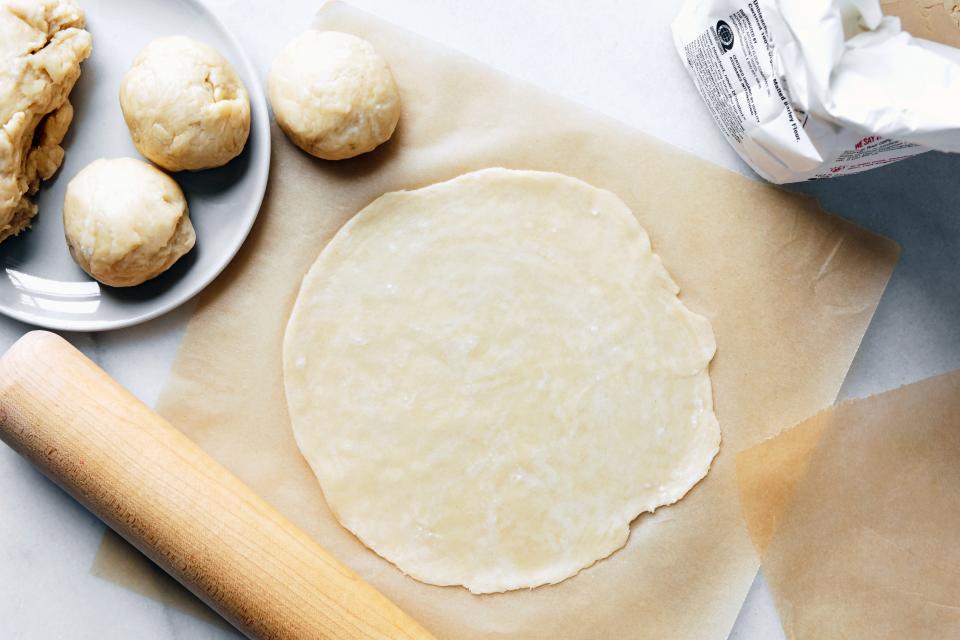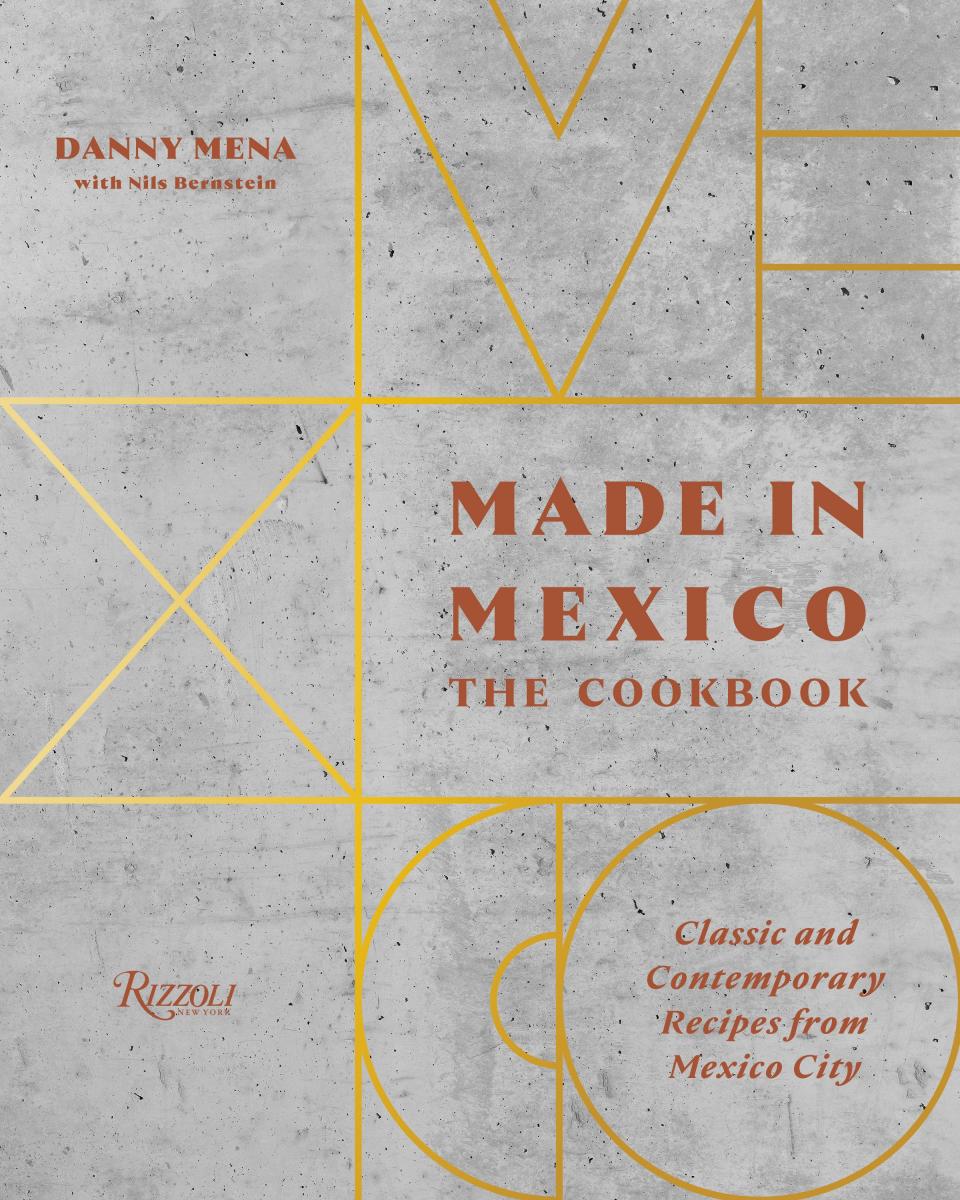How to Make Flour Tortillas From Scratch
Danny Mena is the author of Made in Mexico: Classic and Contemporary Recipes From Mexico City and chef/owner of La Loncheria in the Bushwick neighborhood of Brooklyn, New York. I recently got him on the phone to talk tortillas: specifically, how to make flour tortillas. In addition to sharing his method for the best homemade version, he schooled me on why you should make your tortilla dough hours (or even days) in advance, gave me tips on storing tortillas, and told me why you should never, ever, use a tortilla press for a flour tortilla. Here's the rundown.
Joe Sevier: What's the best fat for making tortillas?
Danny Mena: My personal preference is pork lard. Spaniards introduced pork to Mexico and we quickly took to it, using all parts of the animal. Lard really became the fat of choice because it was readily available and it has a strong flavor.
If you can't use lard, I like vegetable shortening as a substitute. Lard and shortening are both solid at room temperature so they're interchangeable in your tortilla recipe; and unlike butter, there's no water content in shortening, which would affect your ratio of fat to flour. Same goes for vegetable oil—or other fats that are liquid at room temperature—when you start using a liquid fat, it messes with the ratios in your tortilla recipe. You can get good results with other fats, but you really have to know what you're doing.

Danny Mena
So let's talk about that: what's the process for making flour tortillas?
So first you mix the flour and salt with the fat—I like to do it by hand—until the consistency is like coarse sand. Then you add hot, but not scalding, water. You want the dough to be on the sticky side. If you're working it in with your hands, it should feel almost too sticky—almost uncomfortable. And then you just want to work it until the dough is homogenous—this isn't pizza or pita, it's not a yeast dough; you don't really want to develop the gluten.
Once it's mixed, cover it, and let it rest for about an hour at room temperature. That gives the wheat time to fully hydrate so that when you go to roll it out, the tortillas won't be so tacky.
After the dough rests, divided into pieces. For a 6- to 7-inch taco, I like a golf ball–sized piece of dough. If you want a smaller taco, you can divide the dough into smaller portions; or if you want a burrito, especially in America, the tortillas for that can get very big, so you can make bigger portions too. Then let the dough balls rest, covered in plastic so that they don't form a skin, for at least 20 minutes before you start rolling them out.
Can you let them rest longer?
Definitely. I like to let them rest for two or three hours in the refrigerator, and then I let them sit out at room temperature for another 20 to 30 minutes before rolling them out.
How long is too long to leave the dough balls in the fridge?
I've kept them in there for two or three days and they've been perfectly fine. Just keep them in a container or on a sheet tray and make sure they're well covered in plastic so they don't form a skin.
How thin should a flour tortilla be rolled out?
I'm a fan of rolling flour tortillas as thin as you can. In northern Mexico, nine times out of 10, you'll see them really, really thin—and they are the king of the flour tortilla, so I go with what they do. There are a lot of tortillas out there that vary in thickness; I think most of the tortillas you buy in grocery stores in the US are on the thicker side. But, for me, a good flour tortilla is when you can almost see through it. When you roll it out, it should have that translucent quality.
A good tortilla should be a nice vehicle for the taco: thin and light and chewy, and then you can put less filling in it and everything becomes a much more delicate thing to eat.

Flour Tortillas - INSET
Talk to me about using a tortilla press.
You actually don't want to use a tortilla press for flour tortillas. You'll get much better results using a rolling pin. When you start putting pressure on the tortilla, you kind of strain the gluten. I don't know the science behind it, but, when you try pressing a flour tortilla, it immediately wants to spring back into a ball and the more you work it the tighter it gets. So I always recommend rolling out flour tortillas with a rolling pin.
I mean, there are some really skilled people who form tortillas completely by hand—it's like watching someone work pizza dough. If you have the skills, do that, otherwise, stick to the rolling pin.
What's the best way to cook a flour tortilla at home?
I like to roll the tortillas between two sheets of parchment, and then cook them on a griddle or in a non-stick skillet, about 30 seconds per side. They should be cooked through and speckled with golden brown spots. Then you can wrap them in a towel to keep them warm while you cook the rest.
One of my coworkers said she has trouble getting her flour tortillas to puff up, any troubleshooting tips?
There are a couple of things to consider. First, make sure you're working with the right ratio of flour to fat. Fat has a lot to do with getting the tortilla to puff correctly.
Second, check your temperature: it could be too cold or too hot. If it's too hot, the tortilla will kind of stick together. Basically what you want to is to form a layer on the bottom that's in contact with the pan, and then the steam inside the tortilla will be trapped when you flip it over and puff up the middle.
If you're getting that right, sometimes just tamping it down with your hand or a spatula helps. When I want them to really puff, I flip it and let it cook for a few seconds, and then if I don't see it puffing, I'll just press the top of the tortilla with my hand and it springs up. [Note: We don't recommend pressing on a hot, cooking tortilla with your bare hand unless you're a real pro. Try a spatula.]
Any tips on flavoring tortillas or using alternative flours?
I worked with some cooks in Brazil who were making tortillas out of rice flour. They were fried though and were really nothing like a flour tortilla.
I've done more flavoring with corn tortillas than flour—like incorporating hoja santa and other herbs. But if you wanted, you could flavor the water.

Made in Mexico by Danny Mena
Like steep hibiscus or mint tea in the water before making the tortilla?
Right.
How about infusing the fat with spices?
Oh, yeah! Or if you sauté chorizo, and you have the rendered pork fat with all that chorizo flavor. That could be really good.
What the best way to store flour tortillas?
Flour tortillas keep really well (and they reheat really well). Better than a corn tortilla. With a corn tortilla, you've got two or three days, max; but with flour, I can keep them in the fridge for a week—or even two weeks—and have had no issue with the product drying out.
Let them cool completely before you stack them and place in a zip-top storage bag or something else air-tight. If they're still warm, they'll steam in the bag and they can stick together.
And then how would you reheat them?
Same way you cooked them: on a flat-top griddle or a stainless steel or nonstick pan. Cast-iron pans are great. It's already fully cooked, so you might not need to go as long. It's funny, because with leftover corn tortillas, if you don't reheat them well, they'll taste a little chalky. They have to be warm to be good again, but with a homemade flour tortilla, it's not such a fickle thing. It doesn't even need to be reheated.
Tortillas de Harina (Flour Tortillas)
Originally Appeared on Epicurious


